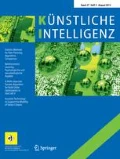Abstract
The path-planning problem for autonomous mobile robots has been addressed by classical search techniques such as A* or, more recently, Theta* or S-Theta*. However, research usually focuses on reducing the length of the path or the processing time. The common practice in the literature is to report the run-time/length of the algorithm with means and, sometimes, some dispersion measure. However, this practice has several drawbacks, mainly due to the loose of valuable information that this reporting practice involves such as asymmetries in the run-time, or the shape of its distribution. Run-time analysis is a type of empirical tool that studies the time consumed by running an algorithm. This paper is an attempt to bring this tool to the path-planning community. To this end the paper reports an analysis of the run-time of the path-planning algorithms with a variety of problems of different degrees of complexity, indoors, outdoors and Mars surfaces. We conclude that the time required by these algorithms follows a lognormal distribution.






Similar content being viewed by others
Notes
All the code, scripts and datasets required to repeat these experiments are available on http://atc1.aut.uah.es/~david/datasets.php#ki2013.
The execution was done on a 2 GHz Intel Core i7 with 4 GB of RAM under Ubuntu 10.10 (64 bits).
DTM of MSL Landing Site in Gale Crater can be obtained at https://hirise.lpl.arizona.edu/dtm/dtm.php?ID=ESP_023957_1755.
References
Millington I, Funge J (2009) Artificial intelligence for games, 2nd edn. Morgan Kaufmann, San Mateo
Ferguson D, Stentz A (2005) Field D*: an interpolation-based path planner and replanner. In: Proceedings of the international symposium on robotics research (ISRR), October 2005
Nash A, Daniel K, Koenig S, Felner A (2007) Theta*: any-angle path planning on grids. In: Proceedings of the AAAI conference on artificial intelligence (AAAI), pp 1177–1183
Munoz P, R-Moreno MD (2012) S-Theta*: low steering path-planning algorithm. In: Proc of the thirty-second SGAI international conference on artificial intelligence, Cambridge, UK, December 2012
Munoz P, R-Moreno MD (2012) Improving efficiency in any-angle path-planning algorithms. In: 6th IEEE international conference on intelligent systems IS’12, Sofia, Bulgaria, September 2012
Choi S, Lee JY, Yu W (2010) Fast any-angle path planning on grid maps with non-collision pruning. In: IEEE international conference on robotics and biomimetics, Tianjin, China, December 2010, pp 1051–1056
Daniel K, Nash A, Koenig S, Felner A (2010) Theta*: any-angle path planning on grids. J Artif Intell Res 39:533–579
Botea A, Muller M, Schaeffer J (2004) Near optimal hierarchical path-finding. J Game Dev 1:1–22
Yap P (2002) Grid-based path-finding. In: Advances in artificial intelligence. Lecture notes in computer science, vol 2338. Springer, Berlin, pp 44–55
Ayorkor G, Stentz A, Dias MB (2008) Continuous-field path planning with constrained path-dependent state variables. In: ICRA 2008 workshop on path planning on costmaps, May 2008
Bresenham J (1965) Algorithm for computer control of a digital plotter. IBM Syst J 4:25–30
Hoos H, Stützle T (1998) Evaluating Las Vegas algorithms—pitfalls and remedies. In: Proceedings of the fourteenth conference on uncertainty in artificial intelligence (UAI-98). Morgan Kaufmann, San Mateo, pp 238–245
Hoos H, Stützle T (2000) Local search algorithms for SAT: an empirical evaluation. J Autom Reason 24(4):421–481
Barr R, Hickman B (1993) Reporting computational experiments with parallel algorithms: issues, measures, and experts’ opinions. ORSA J Comput 5:2
Hoos H, Stützle T (1998) Characterizing the run-time behavior of stochastic local search. In: Proceedings AAAI99
Hoos H, Stützle T (1999) Towards a characterisation of the behaviour of stochastic local search algorithms for SAT. Artif Intell 112(1–2):213–232
Chiarandini M, Stützle T (2002) Experimental evaluation of course timetabling algorithms. Intellectics Group, Computer Science Department, Darmstadt University of Technology, Darmstadt, Germany. Tech Rep AIDA-02-05
Frost D, Rish I, Vila L (1997) Summarizing CSP hardness with continuous probability distributions. In: Proceedings of the fourteenth national conference on artificial intelligence and ninth conference on innovative applications of artificial intelligence (AAAI’97/IAAI’97). AAAI Press, New York, pp 327–333
Epstein S, Yun X (2010) From unsolvable to solvable: an exploration of simple changes. In: Workshops at the twenty-fourth AAAI conference on artificial intelligence
Barrero DF, Castaño B, R-Moreno MD, Camacho D (2011) Statistical distribution of generation-to-success in GP: application to model accumulated success probability. In: Proceedings of the 14th European conference on genetic programming (EuroGP 2011), Turin, Italy, 27–29 Apr 2011. LNCS, vol 6621. Springer, Berlin, pp 155–166
Acknowledgements
Pablo Muñoz is supported by the European Space Agency (ESA) under the Networking and Partnering Initiative (NPI) Cooperative systems for autonomous exploration missions. This work was partially supported by the Spanish CDTI project colsuvh, leaded by the Ixion Industry and Aerospace company.
Author information
Authors and Affiliations
Corresponding author
Rights and permissions
About this article
Cite this article
Muñoz, P., Barrero, D.F. & R-Moreno, M.D. Statistic Methods for Path-Planning Algorithms Comparison. Künstl Intell 27, 201–211 (2013). https://doi.org/10.1007/s13218-013-0257-0
Received:
Accepted:
Published:
Issue Date:
DOI: https://doi.org/10.1007/s13218-013-0257-0




